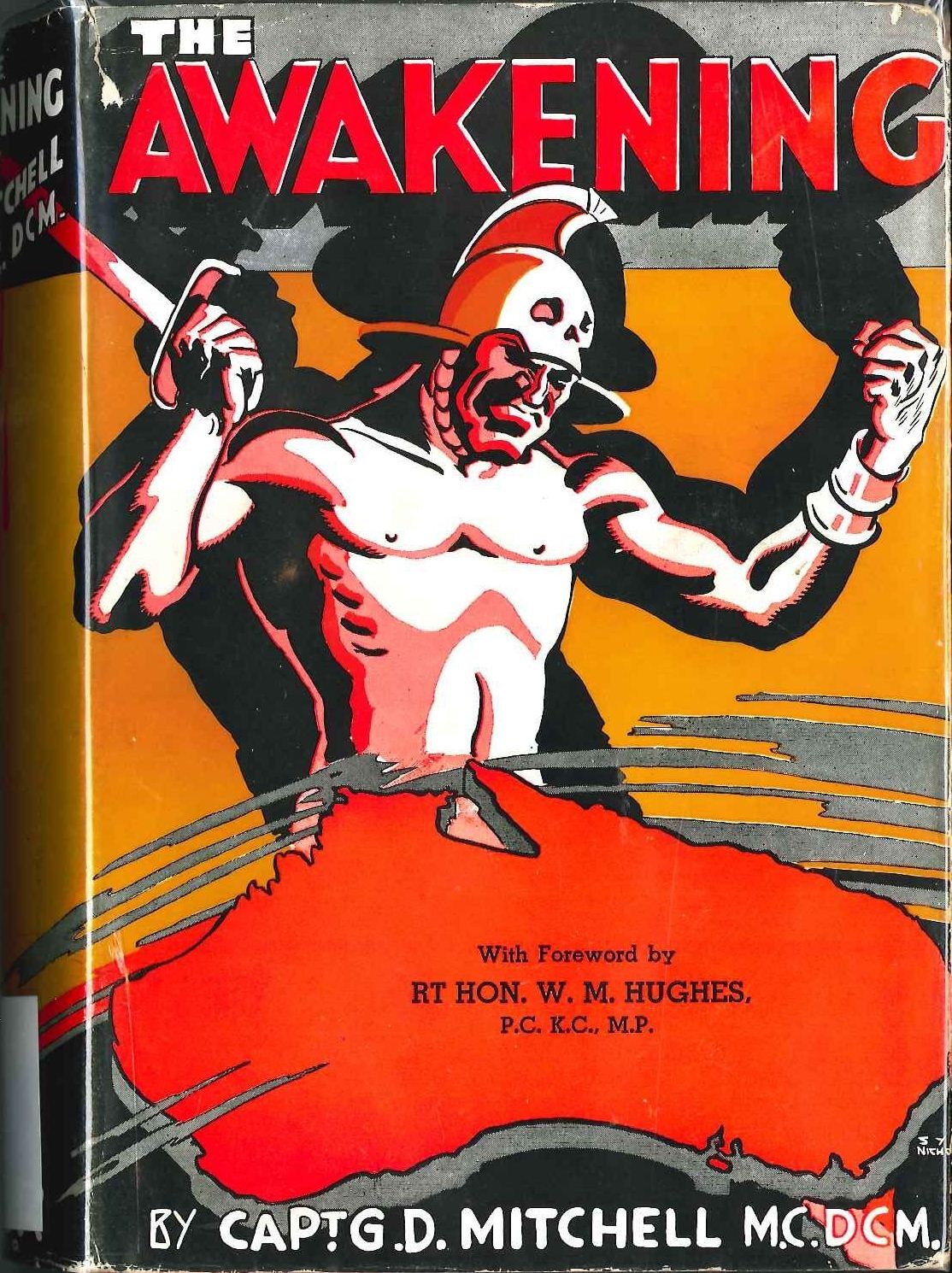
"The full moon is thrusting upward from the sea, yellow as gold, huge with magnification. The islands over by the Great Barrier Reef show as black wedges.
The waves of the high tide, hounded by half a gale, beat noisily on the near foreshore. The palms, rustling and clicking throughout the hours, sway gracefully as dancers to the music of the rising storm.
The Dracula shapes of flying foxes cross the sky in thousands, blotting out the stars as they pass. From a near mango tree comes their discordant and obscene shrieking, the thud of falling fruit."
The Awakening"One red dawn in 1938 the inhabitants of the coastal towns and cities of Queensland and New South Wales are suddenly attacked by an enemy from the sea.
The hero of the tale is one John Cromwell, an ex-major of the A.I.F., then living in North Queensland. He organizes a commando from farmers, bushmen and refugees, and conducts a guerrilla war against the invaders.
After a series of epic battles the commando is exterminated in a last desperate stand at Bulli Pass."
White or Yellow? A Story of the Race-war of A.D. 1908The invaders change to reflect current geopolitical anxieties, but are essentially interchangeable. In this novel it is the Japanese, despite the lurid cover which seems to suggest an attack by ancient Sparta. In the years up to the Cold War, the invader varied from Chinese to Japanese (and back again) with Russian involvement on occasion. The first invasion novel in Australian fiction, published in 1877, was in fact a Russian invasion novel - inspired no doubt by the war in The Crimea.
With the emergence of the Cold War, the 'yellow peril' combined with the 'red menace' and Communist Indonesia joined Communist China as the new menace. In the twenty-first century they were replaced by Islamic terrorists and refugees. The plot of David Rollins' Rogue Element, for example, involved an invasion of Indonesian fishing boats carrying troops disguised as refugees.
The Awakening contains an enthusiastic introduction by Billy Hughes - warning that the British supremacy of the seas which guaranteed our security has gone, but invoking historical examples like that of the Greco-Persian wars where small numbers successfully defend against invading hordes.
It was more prescient than most, however, given its publication only 5 years before the Japanese bombing of Darwin.
The author, George Dean Mitchell, served at Gallipoli and in France. One of his exploits, a stroll through heavy enemy lines shouldering his Lewis Gun, became the stuff of A.I.F. legend. The Australian Dictionary of Biography says of him that he "wrote the A.I.F.s most evocative diary, with a knack of seeing the significance in events."
During World War 2 he ended up living his own story, leading an independent guerilla force in north-west Australia in 1942-43 which lived off the land for weeks while searching for Japanese and training local resistance.
Links
George Dean Mitchell (Australian Dictionary of Biography)
Review of Backs to the Wall - Mitchell's World War 1 diary.
Ross, C (2008) Unsettled imaginings: Australian novels of Asian invasion. Research Master thesis, University of Tasmania.
Comments
Your email address will not be published.
We welcome relevant, respectful comments.